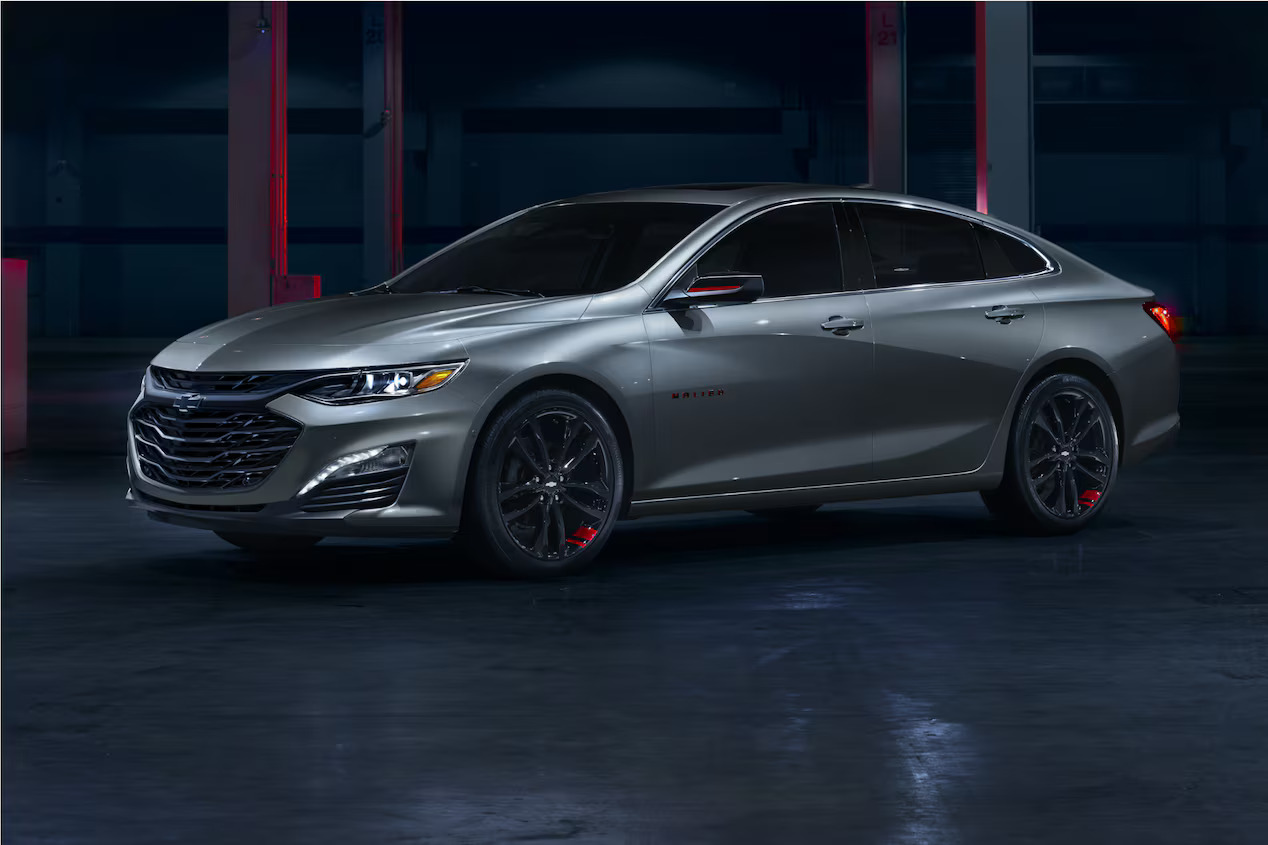In the automotive world, trunk space is often treated as a major selling point. Car commercials boast of generous cargo room, road trip flexibility, and the ability to carry everything from luggage to bicycles.
Yet there’s a quiet trend that contradicts this promise of utility: more and more vehicles are being sold with no space for a spare tire—even those with impressively large trunks.
It’s a detail that many car buyers don’t realize until it’s too late: when they pop the trunk during a roadside emergency, only to find an air compressor and a bottle of sealant where a spare should be.
Why is this happening? Several reasons converge. First, modern automakers are under enormous pressure to improve fuel efficiency. Removing the spare tire, jack, and associated hardware can reduce a vehicle’s weight by 30 to 50 pounds. That may not seem like much, but every pound matters when chasing government-mandated MPG targets.
Second, advances in run-flat tire technology and roadside assistance services have made the full-size spare or even the compact “donut” less common. Third, and most frustratingly for drivers, carmakers often prefer to use the space under the trunk floor for other purposes, like battery placement in hybrids and EVs, or simply leaving it empty and unfinished.
The result is an odd contradiction. You can have a sedan or crossover with a massive 16-cubic-foot trunk, and yet no room for a spare tire. Instead, you get an inflator kit and a note in the owner’s manual advising you not to drive more than 50 miles if your tire gets punctured.
This presents a real-world issue, especially in rural areas, during road trips, or in cold climates where sealants may be ineffective. It’s a convenience cost disguised as a space-saving feature.
In this article, we’ll explore 12 specific cars that suffer from this irony: big trunks, but no spare tire space. These are vehicles that make you think you’re getting the best of both worlds—until you’re stranded by a flat tire.
We’ll dive into how and why each car sacrifices the spare, and what buyers should know before trusting that big trunk to back them up in a pinch.
Also Read: 5 Cars With the Best Rear Camera Clarity at Night
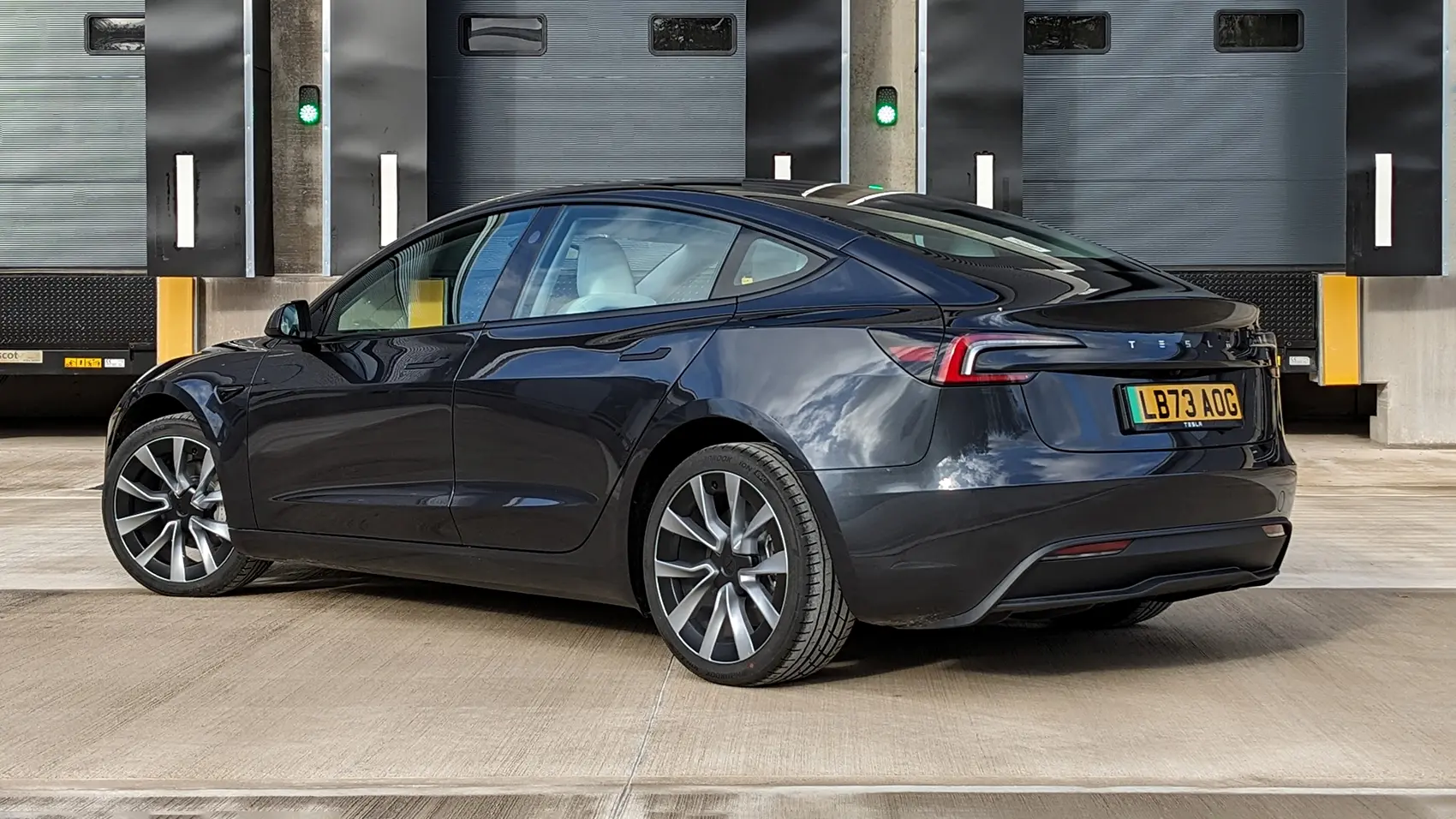
1. Tesla Model 3
The Tesla Model 3 is one of the most popular electric vehicles in the world, praised for its minimalist design, cutting-edge tech, and excellent range. It also boasts a deceptively spacious trunk for a compact sedan, especially when considering both the rear cargo area and the additional front trunk, or “frunk.”
Together, they provide more than enough room for groceries, luggage, or gear for a weekend getaway. However, one crucial element is missing entirely: space for a spare tire.
Tesla, like many EV manufacturers, has prioritized battery placement and cabin packaging over traditional vehicle design. The underfloor area of the trunk—where a spare tire would typically reside—is either taken up by electrical hardware or simply left bare with no mounting points for a jack or wheel.
Tesla’s philosophy is to minimize moving parts and reduce vehicle weight, which aligns with their goal of efficiency and long-range performance. Instead of a spare, the Model 3 comes with a tire repair kit and assumes most owners will rely on Tesla’s roadside assistance.
For drivers in urban areas, this may not be a problem. But for those living in rural regions or areas with limited towing coverage, the lack of a spare is a real concern. Adding an aftermarket spare takes up precious trunk space and often involves custom solutions.
The irony is clear: despite having ample cargo room compared to many traditional sedans, the Model 3 offers no built-in solution for one of the most basic automotive emergencies. It’s an example of how high-tech priorities can sometimes leave practicality behind.
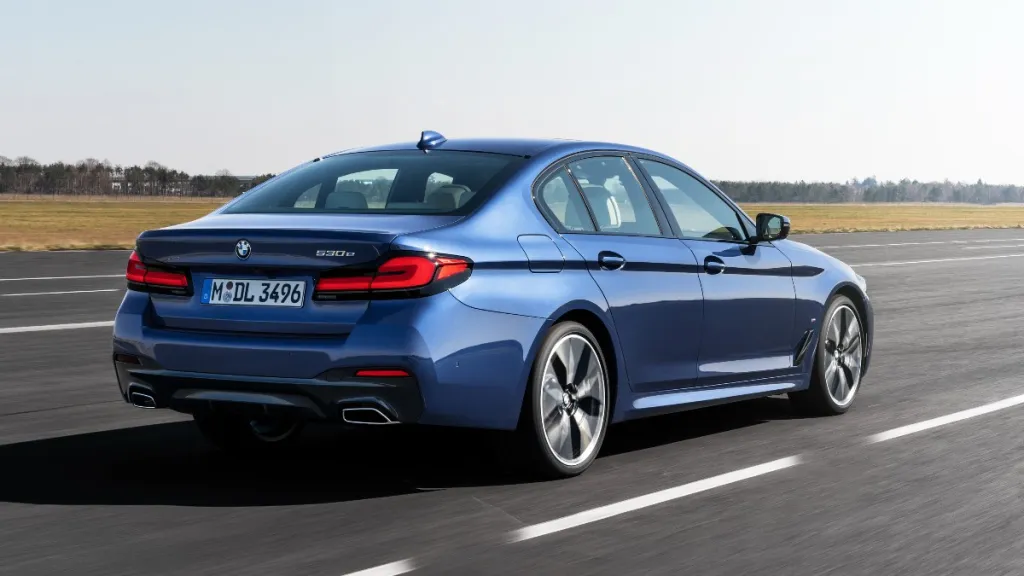
2. BMW 5 Series (G30, 2017–2023)
The BMW 5 Series is often praised for blending executive luxury with everyday usability. The G30 generation, introduced in 2017, offers a large and well-finished trunk with approximately 18.7 cubic feet of space, among the best in its class. There’s enough room to carry golf bags, suitcases, or even small furniture items.
Yet despite this cargo capacity, BMW chose not to include a spare tire or even space for one in many of its 5 Series variants.
Instead, the G30 platform relies heavily on run-flat tires. These are designed to maintain drivability for short distances after a puncture, allowing the driver to reach a service station without needing to stop and change the tire.
While theoretically convenient, run-flats tend to ride harsher, are more expensive to replace, and don’t eliminate the need for service when a tire fails catastrophically.
Additionally, run-flats aren’t always available in all-weather variants, meaning some owners swap to standard tires, which then leaves them vulnerable with no spare and no place to store one neatly.
Adding insult to injury, the under-trunk area in many G30 models is used for electronics and noise-dampening material. There’s simply no dedicated well for a donut spare or jack.
Owners who do want a spare often resort to placing it directly into the trunk space, losing day-to-day cargo room in the process. It’s an unfortunate trade-off in a car that otherwise excels at long-distance comfort and practicality.
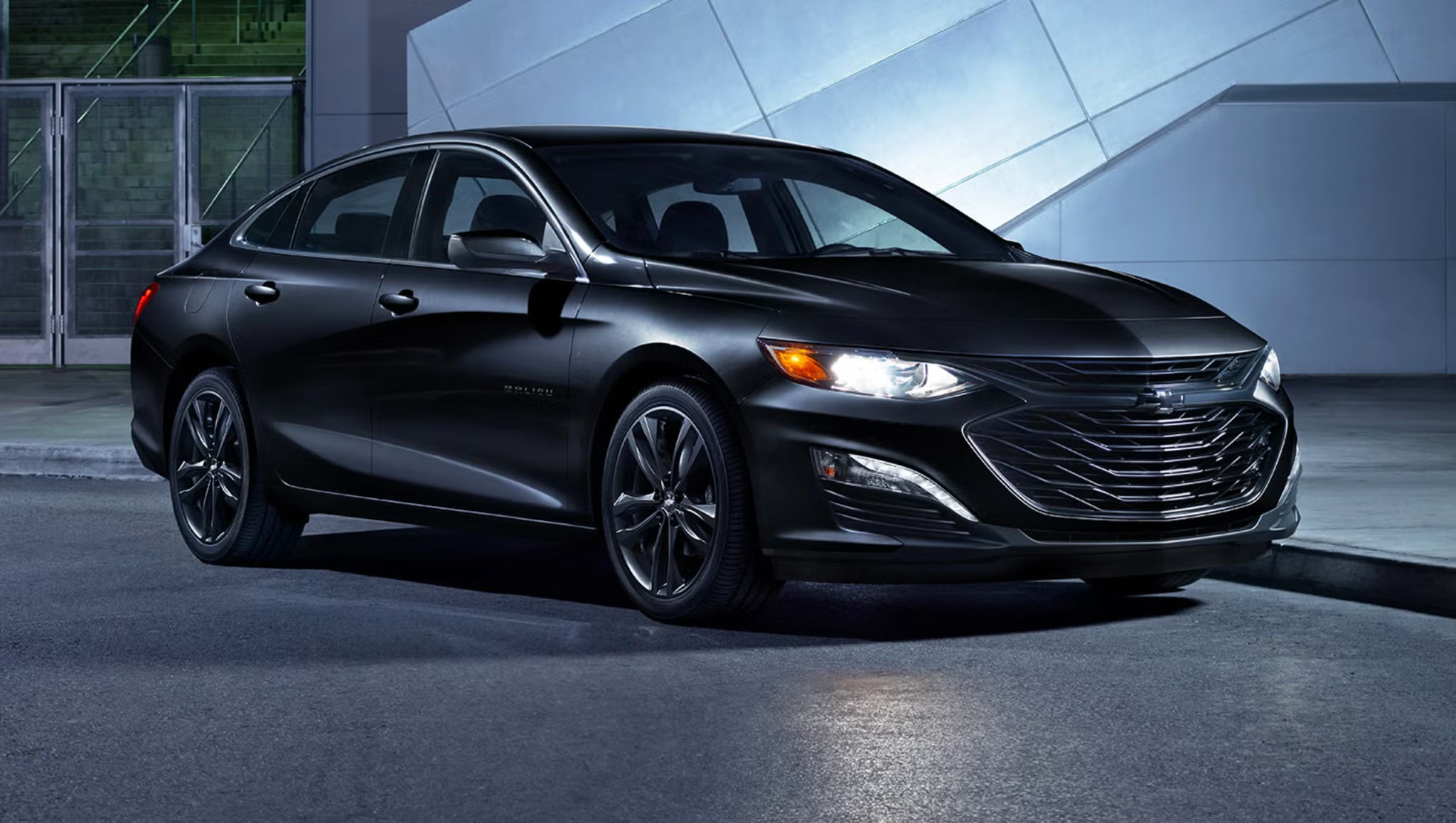
3. Chevrolet Malibu (2016–2023)
The Chevrolet Malibu has long been a staple of the midsize sedan segment, offering roomy interiors and generous trunk space, especially in recent model years.
With over 15 cubic feet of cargo room, the Malibu should easily accommodate a spare tire. But in many trims, especially the more fuel-efficient models, Chevrolet has eliminated the spare tire and the well to store it altogether.
This omission is partly driven by weight reduction goals. Chevrolet, like other automakers, uses a tire inflator kit in place of a traditional spare to help meet corporate average fuel economy (CAFE) standards.
The hybrid versions of the Malibu are especially impacted, with battery packs taking up underfloor real estate and making the inclusion of a spare nearly impossible. Even in gasoline-only variants, the space is often taken up by Styrofoam filler pieces meant to support the floor and house the compressor.
Owners frequently express frustration at discovering this only after a flat tire leaves them stranded. Some have chosen to retrofit a compact spare into the trunk, but it comes at the expense of day-to-day usability and safety in a crash scenario.
It’s another example of how automakers chase efficiency metrics while leaving buyers to handle the real-world consequences of flat-tire inconvenience.

4. Toyota Avalon (2013–2022)
The Toyota Avalon has always been a flagship full-size sedan in Toyota’s lineup, offering upscale features, an impressively spacious cabin, and a cavernous trunk measuring over 16 cubic feet. It’s a car aimed at drivers who prioritize comfort, long-distance cruising, and convenience.
You’d expect a vehicle of this size and positioning to come fully equipped with emergency preparedness in mind, including a spare tire. But in several model years, particularly the hybrid trims, the Avalon completely omits a spare tire, offering no designated space beneath the trunk floor to accommodate one either.
In hybrid versions of the Avalon, the absence is easy to trace: the underfloor compartment is largely occupied by battery components. These take precedence over the usual spare tire well, meaning Toyota had to choose between hybrid efficiency and old-school practicality.
The result? Owners are given a tire inflator kit or sealant that offers only a temporary fix, and often fails altogether in the case of a sidewall puncture or tire blowout. Even some non-hybrid models have been sold without a spare, opting for lightweight foam inserts instead of a functional storage area beneath the trunk lining.
This can feel like a betrayal for Avalon buyers, who expect a more traditional, comprehensive ownership experience. The car is marketed as a luxurious long-hauler, and yet it leaves owners vulnerable in a flat-tire scenario, especially on highway trips or in rural areas where towing assistance may not be readily available.
To retrofit a spare into the trunk, many owners must sacrifice trunk space and improvise mounting solutions. It’s another instance where modern vehicle efficiency standards quietly override a driver’s peace of mind, even in one of Toyota’s most comfort-oriented models.
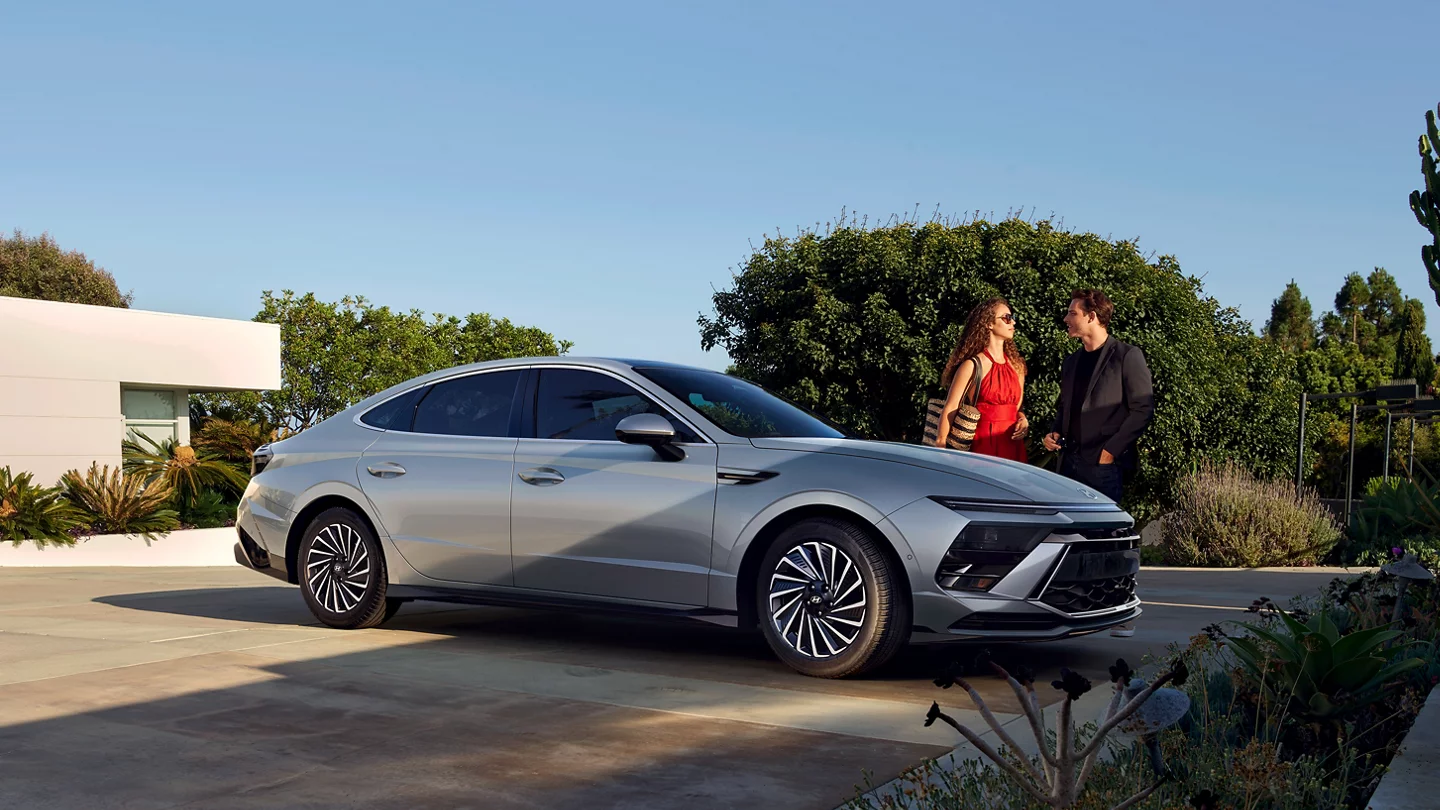
5. Hyundai Sonata (2015–Present)
The Hyundai Sonata has steadily evolved into a serious contender in the midsize sedan category, with attractive styling, generous rear legroom, and a highly usable trunk, especially in its latest iterations, which offer up to 16 cubic feet of cargo space.
That’s more than enough to support a spare tire in theory. Yet, like several modern sedans, the Sonata often comes without a spare, and in some cases, not even the structural provision for one. Hyundai has followed the trend of equipping many trims with only a tire repair kit, leaving some buyers surprised when they check beneath the trunk mat.
The decision to exclude the spare is closely tied to Hyundai’s commitment to weight reduction and improving fuel economy. This is especially evident in the hybrid and plug-in hybrid variants of the Sonata, where the space typically reserved for a spare tire is occupied by battery packs or other hybrid-specific hardware.
In some models, a Styrofoam tray holds the jack and inflator tools but leaves no recess deep enough to house a compact spare, even if purchased separately. This creates a conundrum for buyers who want to add a spare after purchase—they’re forced to place it loose in the trunk or forgo it altogether.
The omission is especially frustrating because Hyundai often touts the Sonata’s practicality in its marketing. It’s a family sedan, a commuter car, a road-trip vehicle—yet it lacks the basic tools needed for one of the most common roadside emergencies.
Sonata owners often turn to third-party kits or retrofitting options, but that requires extra money and research. Some even resort to carrying a full-size spare that eats up trunk space. It’s a glaring example of a disconnect between vehicle design and real-world usage needs—something that’s hard to justify in a car sold on convenience.
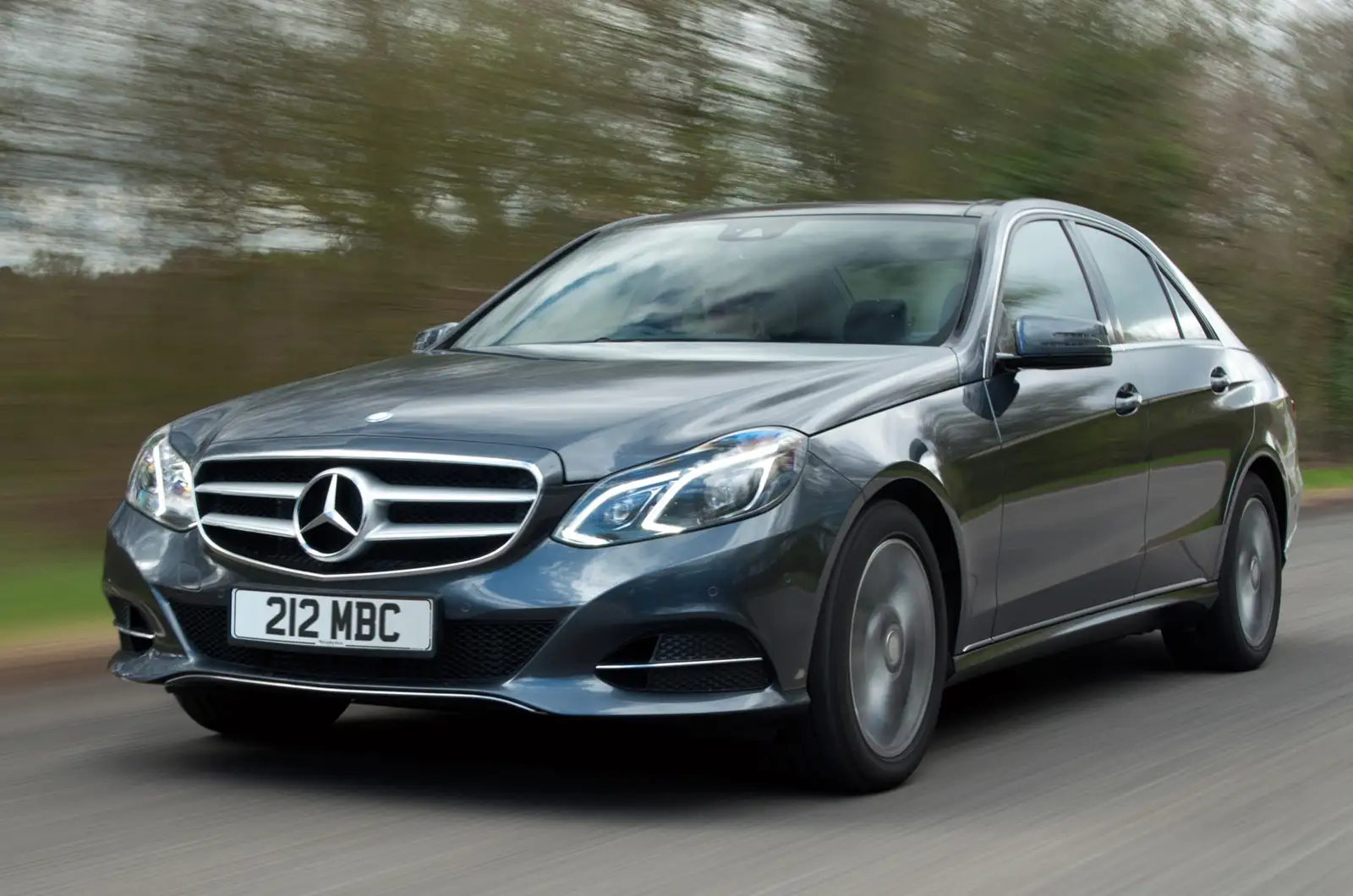
6. Mercedes-Benz E-Class (W213, 2016–2023)
The Mercedes-Benz E-Class is a symbol of understated luxury, renowned for its ride comfort, elegant interior, and everyday usability. The sedan version offers a spacious 13 to 14 cubic feet of trunk space—modest by full-size standards but still ample for luggage and business travel needs.
However, despite its executive-class pricing and positioning, the E-Class does not come with a spare tire in most trims, and crucially, provides no dedicated space for one either. It’s a counterintuitive omission in a vehicle that otherwise seems to offer everything.
Mercedes, like many European manufacturers, leans heavily on run-flat tire technology or mobile repair kits to offset the absence of a physical spare. These run-flat tires are designed to maintain enough integrity after a puncture to allow travel for 50–70 miles at reduced speed.
While that may be sufficient in urban areas, it becomes a liability on longer trips or in locations where roadside service isn’t immediately available. Additionally, run-flat tires tend to ride harsher, wear more quickly, and are often more expensive to replace—all factors that contribute to owner dissatisfaction over time.
The underfloor area of the E-Class trunk is typically covered by high-density foam panels or houses components related to the car’s electronics and safety systems, such as the battery in hybrid variants or subwoofer modules in premium trims.
This means even owners who are proactive about adding a spare tire have limited options—they must place the spare directly in the trunk, undermining cargo space and the clean look of the interior.
It’s a frustrating trade-off in a vehicle that otherwise represents the pinnacle of comfort and thoughtfulness. In the case of the E-Class, the missing spare feels less like a design oversight and more like a deliberate removal of a feature that many luxury buyers still value.
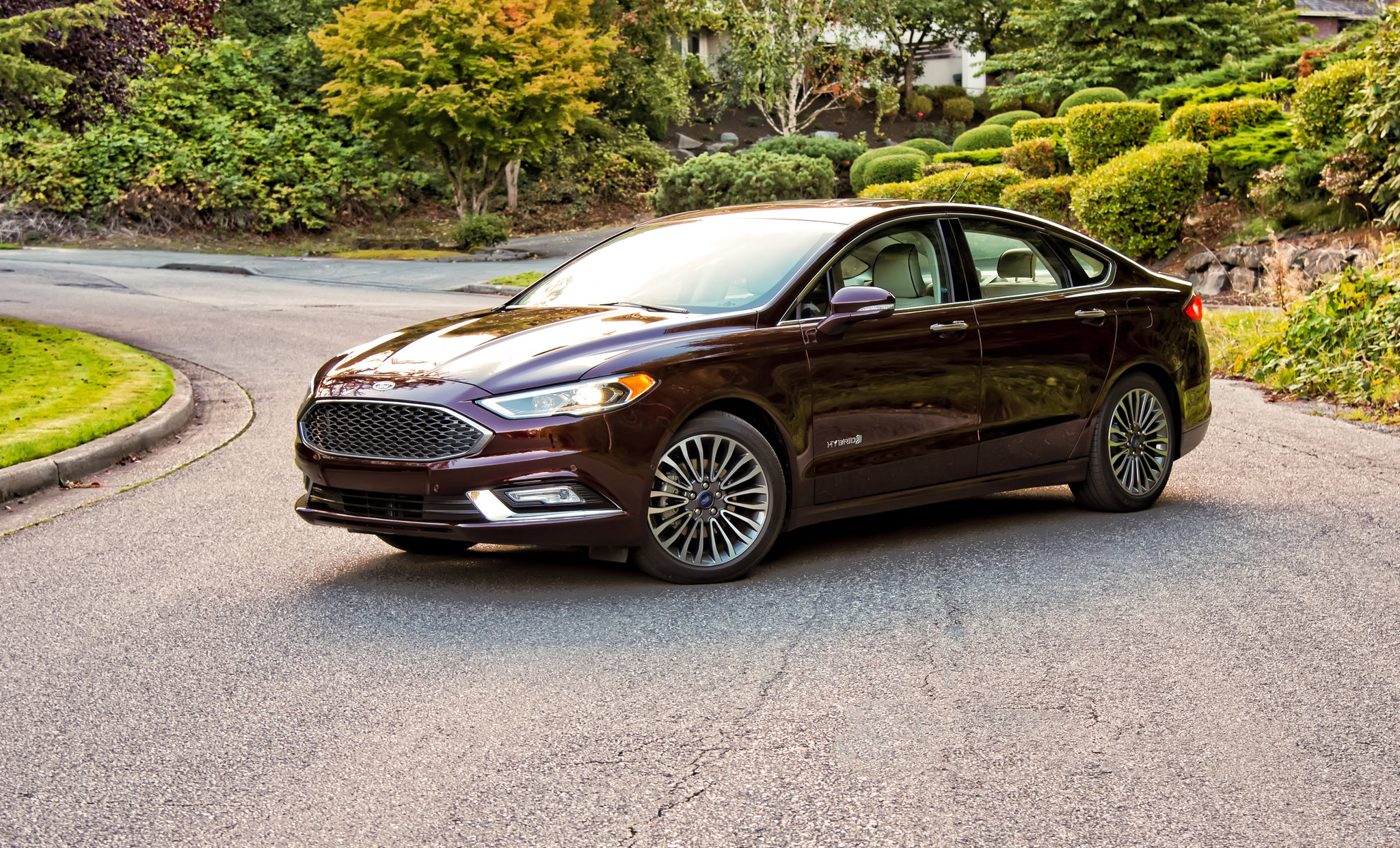
7. Ford Fusion (2013–2020)
The Ford Fusion, a midsize sedan that balances practicality and style, has earned praise for its sleek exterior, comfortable ride, and spacious interior. The trunk space in most Fusion models offers over 16 cubic feet of room, which should be more than enough to accommodate a spare tire.
However, Ford, like several other automakers in recent years, has chosen to eliminate the spare tire from the Fusion’s design in many trims. Instead, the car comes with a tire repair kit or an air compressor, leaving drivers without the peace of mind that comes from having a spare in case of an emergency.
Ford’s decision to remove the spare tire is part of a broader trend aimed at reducing vehicle weight and improving fuel efficiency. The Fusion, especially in hybrid and plug-in hybrid versions, features an underfloor area that is either occupied by the battery pack or designed to be more space-efficient, making it unsuitable for a full-size spare.
With the increasing popularity of run-flat tires and inflation kits, many automakers believe these solutions are sufficient for most consumer needs. Unfortunately, this approach overlooks real-world scenarios where these kits don’t work as well, particularly with more severe tire damage like sidewall tears, which a repair kit can’t fix.
The impact of this design choice becomes evident when Fusion owners find themselves on a long drive, only to encounter a flat tire and realize that their vehicle has no spare to fall back on.
While the air compressor and tire sealant may get you back on the road temporarily, they do little to assuage the feeling of being unprepared in a situation where a traditional spare would have provided much-needed peace of mind.
This can be especially problematic for those living in rural or remote areas where roadside assistance might not be as readily available.
As a result, many Fusion owners have resorted to the costly and time-consuming option of retrofitting a spare tire into the trunk, often sacrificing valuable cargo space in the process. It’s a glaring issue that compromises the Fusion’s otherwise solid reputation for practicality.
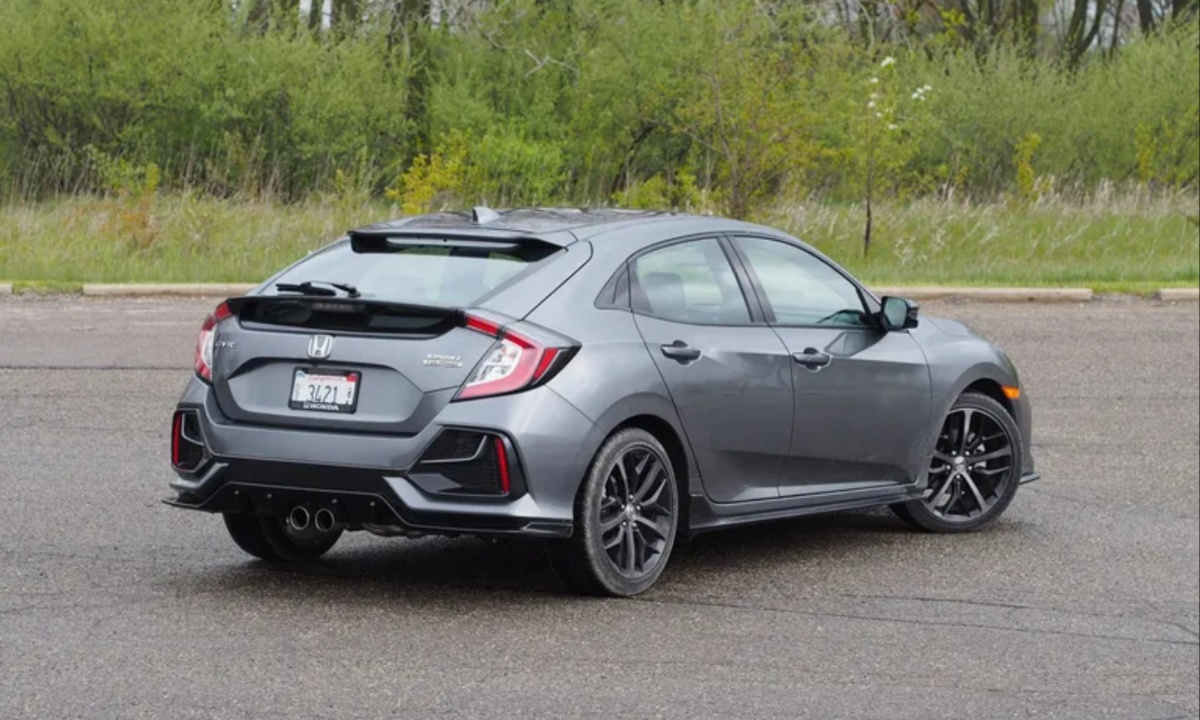
8. Honda Civic Hatchback (2017–Present)
The Honda Civic has long been a benchmark in the compact car category, offering a dynamic driving experience, great fuel efficiency, and a reputation for reliability. The Civic Hatchback, in particular, is celebrated for its spacious interior and cargo space, which is on par with larger sedans and crossovers.
With over 25 cubic feet of trunk space in the hatchback configuration, you’d think the car would easily accommodate a spare tire. However, many newer Civic Hatchback models don’t provide a dedicated compartment for a spare, instead opting for a tire repair kit.
The decision to omit the spare tire from the Civic Hatchback is driven by the desire for weight savings and improved fuel economy.
In these models, the underfloor area that would traditionally house a spare tire is either occupied by a fuel tank or additional suspension components, and even in the models that don’t have these features, space is often used inefficiently.
Furthermore, as with many modern vehicles, tire repair kits and inflation systems are touted as viable alternatives. These systems can temporarily seal minor punctures, giving the driver a chance to reach a service station.
However, these solutions are only effective for small punctures, and can’t address significant tire damage, such as a blowout or sidewall tear, leaving the owner stranded with no option for repair.
The real problem with this design choice is that it contradicts the Civic Hatchback’s overall emphasis on practicality. The Civic is known for its well-thought-out interiors and ample cargo space, but when you need to use that trunk space for an emergency spare tire, you’re out of luck.
Many owners have expressed frustration, especially when they discover that replacing a flat in the Civic requires relying on roadside assistance or towing services, which can be time-consuming and costly
. For those who regularly drive long distances or live in less-populated areas where service might not be readily available, this omission can feel like a significant oversight.
Adding a spare tire is a costly and inconvenient retrofit, especially since it requires sacrificing part of the valuable cargo space that makes the Civic Hatchback a great vehicle for day-to-day use.

9. Volkswagen Passat (2012–2022)
The Volkswagen Passat has always been a reliable midsize sedan with an emphasis on comfort, safety, and value. Offering a spacious interior and a large trunk that can hold up to 15.9 cubic feet of cargo, the Passat is an attractive option for families or those who need a daily driver with a roomy trunk.
However, despite its size and practicality, the Passat, like many vehicles of its kind, omits the spare tire in favor of a tire repair kit, leaving drivers with a false sense of security about the trunk’s potential.
The absence of a spare tire in the Passat is often tied to the automotive industry’s focus on reducing weight to improve fuel efficiency. For the Passat, this means that the space traditionally used for a spare tire is now filled with foam inserts, subwoofer units, or other structural elements that support the car’s design.
The repair kit that comes standard with most Passat models is intended to temporarily fix minor tire issues, like small punctures, but it does little to address more severe tire failures.
Moreover, these kits often do not work well in colder temperatures, or in situations where the puncture is too large to seal effectively, leaving the driver stranded with no real option for a fix.
For those who find themselves in this situation, the frustration is compounded by the realization that, although the Passat offers ample cargo space, it can’t help in a critical emergency.
Unlike vehicles that provide a spare tire as a standard feature, the Passat’s reliance on a repair kit means that owners are left to rely on roadside assistance or towing services, which may not be readily available in more rural areas.
As with many other models, some owners choose to retrofit a spare tire into the vehicle, but that often involves modifying the trunk’s layout, resulting in the loss of cargo space that makes the Passat appealing in the first place.
This contradiction, where a vehicle marketed as a practical family car offers no true backup for a flat tire, is a common source of frustration for owners who expect more from a sedan of this class.
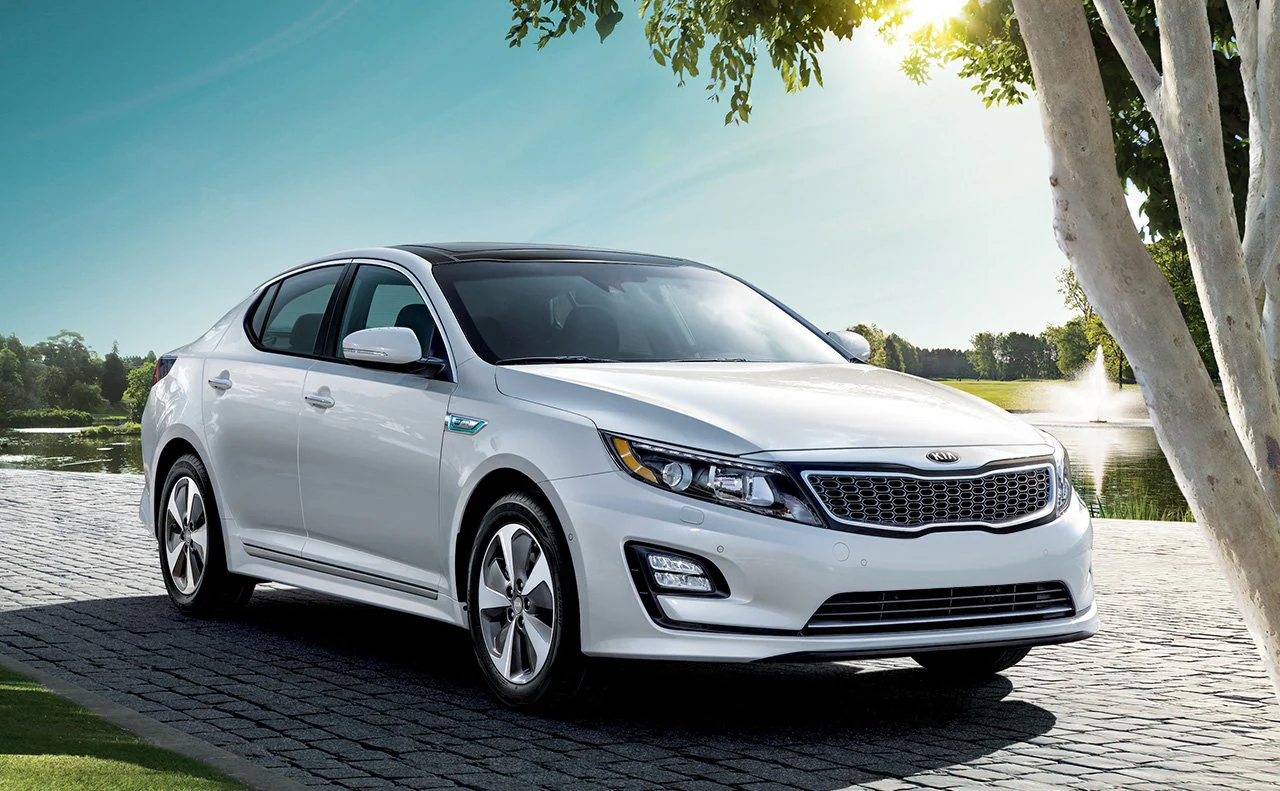
10. Kia Optima (2016–2020)
The Kia Optima has been a strong contender in the midsize sedan segment for years, offering a great balance of comfort, performance, and technology. With its sleek exterior, spacious cabin, and ample trunk space—over 15 cubic feet in many trims—the Optima is often praised for being a practical family car.
However, despite its sizable trunk, the Optima disappoints when it comes to one crucial aspect of emergency preparedness: the spare tire. In many models, Kia has opted to eliminate the spare and instead provides a tire repair kit or air compressor as the primary means of dealing with flats.
Kia’s decision to remove the spare tire is driven by a desire to reduce the car’s weight and improve fuel efficiency, a common practice among automakers to meet modern environmental and economic standards.
This is particularly evident in the hybrid and plug-in hybrid versions of the Optima, where the space typically reserved for a spare tire is occupied by the battery pack or other hybrid components.
Additionally, in regular gas-powered models, the trunk’s underfloor area is often dedicated to a foam insert system that holds the tire repair kit, rather than a spare tire well.
While this approach may work in some situations, it leaves drivers vulnerable if they encounter a significant tire problem that cannot be addressed with a repair kit, such as a blowout or a damaged sidewall.
What many Optima owners find frustrating is that the vehicle’s spaciousness and practicality give the illusion that a spare tire would easily fit beneath the trunk floor.
The trunk itself is large enough to carry several suitcases, groceries, or large boxes, but once a flat occurs, the lack of a spare becomes a real issue, especially in rural or less-populated areas where roadside assistance may not be readily available.
To remedy this, some owners go to the trouble of installing an aftermarket spare, but that often involves sacrificing valuable trunk space and creating an inconvenient, temporary solution.
This leaves many questioning whether the weight savings and fuel efficiency improvements are worth the lack of emergency preparedness, especially when considering the convenience and peace of mind that a spare tire can offer in critical situations.
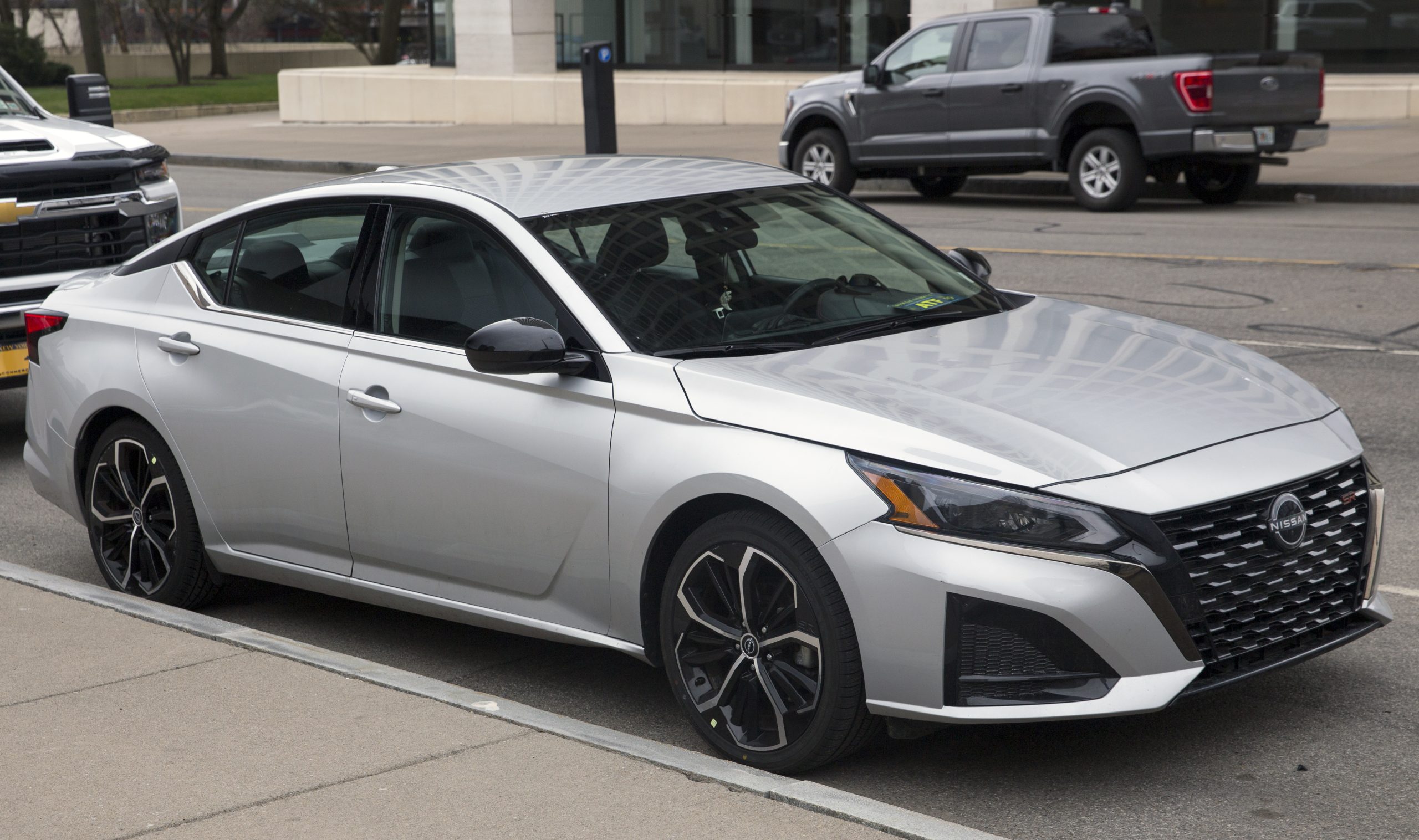
11. Nissan Altima (2019–Present)
The Nissan Altima has long been one of the most popular midsize sedans, offering a comfortable ride, ample interior space, and a reputation for reliability. Its trunk provides around 15.4 cubic feet of cargo room, which is competitive in its class and offers plenty of space for groceries, luggage, and other items.
However, despite its spacious trunk, the Altima does not include a spare tire in most configurations, opting instead for a tire repair kit, which many owners find unsatisfactory when dealing with a major tire failure.
The reason for this omission is similar to other vehicles in this category: a focus on reducing weight and improving fuel efficiency. In hybrid and all-wheel-drive variants of the Altima, much of the underfloor space is taken up by hybrid batteries, fuel tanks, or rear-wheel-drive components, leaving little room for a traditional spare tire.
Even in the front-wheel-drive versions, the floor area is often used to house the jack, compressor, and tire sealant, rather than a well-designed designed for a spare tire.
While this may be an acceptable solution for minor tire issues, the repair kit is essentially useless in situations where the tire damage is severe, such as a blowout or sidewall puncture, where no amount of sealant can help.
In a world where long road trips and extended commutes are common, the lack of a spare tire becomes a real inconvenience. Altima owners frequently express dissatisfaction when they find themselves stranded with a flat tire and no alternative but to rely on roadside assistance or hope that the repair kit will provide a temporary fix.
Unfortunately, tire repair kits have limitations, especially in colder temperatures, and aren’t guaranteed to work on all types of damage.
Many owners of the Altima, frustrated by the inconvenience, turn to aftermarket solutions to retrofit a spare tire into the vehicle, but doing so typically requires giving up trunk space and creating a less-than-ideal setup.
It’s a perplexing design choice in a car that otherwise offers plenty of cargo room and practicality, making the absence of a spare feel like a significant misstep for many.

12. Subaru Impreza (2017–Present)
The Subaru Impreza is well-known for its all-wheel-drive capabilities, practicality, and ruggedness—traits that make it a popular choice for those who need a compact car with enhanced traction for handling tough weather conditions.
The sedan and hatchback versions of the Impreza both offer decent trunk space, ranging from 12.3 cubic feet in the sedan to 20.8 cubic feet in the hatchback configuration.
However, despite the car’s all-weather versatility, Subaru has opted to exclude a spare tire from the Impreza’s design, particularly in newer models. Instead, the vehicle comes equipped with a tire repair kit or an inflator, leaving owners without a spare when they need it most.
This decision is largely motivated by the same goals that influence other manufacturers: weight reduction and improved fuel economy.
Additionally, the compact design of the Impreza, with its lower trunk floor, leaves very little room for the spare tire and jack setup, especially when considering the car’s all-wheel-drive system and the accompanying driveline components that take up valuable space beneath the trunk.
Subaru also promotes its tire repair kit as a suitable alternative for minor tire issues, but this solution is far from ideal for owners who experience serious tire damage, such as blowouts or sidewall punctures, which cannot be addressed with the kit.
The absence of a spare tire in the Impreza is particularly frustrating for buyers who expect the car’s rugged capabilities to extend to roadside emergencies as well.
Given Subaru’s reputation for building vehicles that can handle harsh conditions, the lack of a spare tire is an unexpected oversight, especially in the Impreza, a car that’s marketed as a practical, go-anywhere compact.
For drivers who frequently venture into rural areas or on longer trips, the tire repair kit may not be sufficient, and the need for roadside assistance can become a significant inconvenience.
Many Impreza owners have resorted to retrofitting a compact spare tire into the trunk, but this often involves sacrificing precious cargo space in a car that was already on the smaller side to begin with. It’s a design flaw that feels out of place in a car that touts its reliability and versatility, especially in emergencies.
Also Read: Top Engines That Can Survive Without a Working Cooling Fan
As automakers continue to chase lighter, more fuel-efficient vehicles, they’ve made sacrifices that seem to ignore some of the most basic and crucial aspects of vehicle design.
The spare tire, once considered an essential component of a car’s emergency kit, is now being left out of many modern sedans, hatchbacks, and even some crossovers, much to the frustration of drivers who rely on these vehicles for daily commutes, road trips, and family getaways.
The trend of eliminating spare tire wells in favor of air compressors, sealants, and run-flat tires is driven by the desire to reduce weight, improve efficiency, and make room for other technologies like hybrid powertrains and advanced safety features.
However, these efforts often clash with the real-world needs of consumers who expect their cars to be as prepared for an emergency as they are for a trip to the grocery store. In cars with large trunks, the absence of a spare tire can be especially puzzling, as it creates a contradiction between a vehicle’s spaciousness and its lack of readiness for common roadside issues.
For many car buyers, the solution is simple: before making a purchase, be sure to thoroughly review the vehicle’s tire options, emergency preparedness, and trunk design.
And for those who have already purchased one of the cars on this list, retrofitting a spare tire, while not ideal, can provide added peace of mind in the event of an unexpected flat.
While it’s clear that automakers are prioritizing weight and efficiency, the growing lack of spare tires in cars with large trunks calls into question whether convenience and safety are being compromised for the sake of economy.
Ultimately, it’s a reminder that bigger trunks don’t always mean more practical solutions—sometimes, it’s the small, overlooked details that make the biggest difference.

